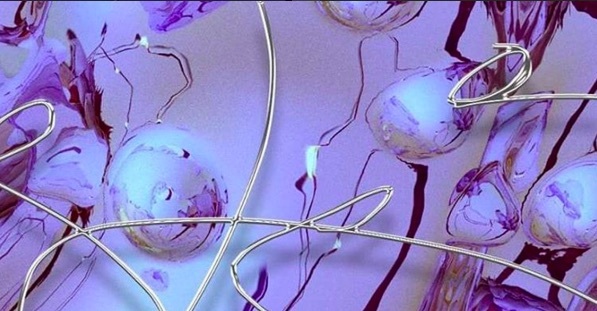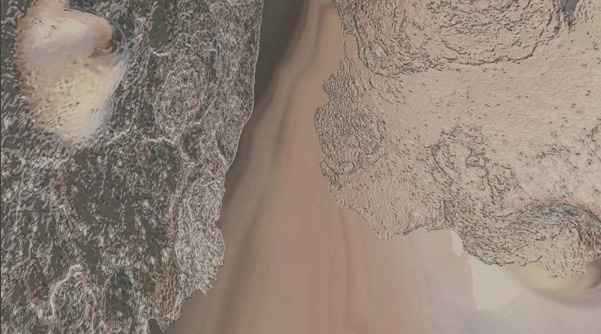Sydney-based Rachael Archibald represents a new kind of artist. Disposing of the notion of a traditional art space, she relies heavily on technology and virtual galleries to create and show works that seamlessly fuse the organic with the inorganic via trance-like videos, sculptures and installations of forms that are at once unidentifiable yet somehow comforting and familiar.
In breaking down the exclusivity surrounding the art-world, Archibald is leading an online revolution that is making art unpretentious and inclusive.
i-D: So how did it all begin?
Rachael: Well when I was younger my mum tried to make me do heaps of extra-curricular stuff and I was a bit shy so I wasn’t really keen on doing most things. She took me to an art class and I didn’t have to talk to anyone and it was great because I could just do my own thing. That’s where it all started and after that I went to study art and I’ve been doing it ever since.

How do you come up with the shapes and forms that you use in your artwork?
I don’t think I use the digital platform because it’s a comment on the times, I think it’s just something I’m better at using. I’ve always been more into natural and biological forms so I use this program called Sculptress, which is basically a ball of clay in virtual reality. I play around and find a shape that looks best for me in this familiar, natural way. I think humans are attracted to geological forms like that. I don’t really think too hard about it but it’s more just about what I’m attracted to.
It’s interesting that you are heavily reliant on technology but it’s also heavily based on natural forms. What is your relationship with technology like?
I think it’s a good platform to use. I don’t dislike what it does for people and I use it as a promotional tool because it’s good for networking and connecting with people and getting my art out there. I like how instant it is, you can easily upload something and show your art to everyone so it’s less exclusive in that way. If I was to show my work in a gallery not a lot of people would see it so I like the global inclusivity that it has. I don’t want it to be only seen once a year. I’m not really into how ‘precious’ art seems.

Do you see the internet gallery space as the next step in the art world?
I think so. It’s really hard because I don’t know how to do all the coding to make a gallery like that so I rely on other people to install the work for me. I would like to learn how to install digitally but yeah it’s becoming more prevalent. I don’t think it will take over the traditional gallery format, which I still really like, but it’s nice to have both.
Do you think this virtual space is a positive thing for artists?
There are so many possibilities. You can make your sculpture move and float within the gallery space. You can do so much more virtually than in the actual gallery so a lot of people will get more into it. There was a show recently where the real-life gallery space was then made into a virtual one so that all the people who couldn’t make it to the show could see it virtually. It’s an opportunity to collaborate and expand viewership.

You’ve done a few collaborations in the past. What’s it like working with artists from different fields?
I tend to work solo because it’s a bit personal and when I do collaborate I usually hate it because I don’t get to do whatever I want (laughs). I recently collaborated with a musician for Vivid Sydney. She sent me the music and we’d work together for the visuals. I think my artwork lends itself more to ambient music because it looks slow-moving and trance-like so when it comes to more rhythmic things I struggle a bit, but I enjoy having a challenge.
There’s something hypnotic about your work, what do you think draws people to it?
I guess it’s slow-moving and the colours I use are subtle. You almost look at it and ask whether it’s really moving so you need to stare at it for a while, which draws you in. I tend to think it’s the natural forms that people are drawn to. I’ve always found that when I ask people what my artwork reminds them of they will say things like “a landscape” or “body parts” or things like that so I like that people see it on this basic human level rather than this art-hysterical level.
Credits
Text Kasumi Borczyk
Images via
